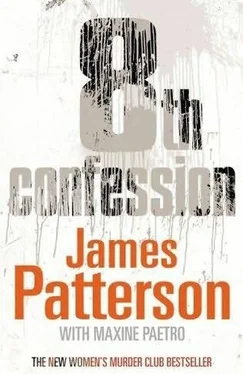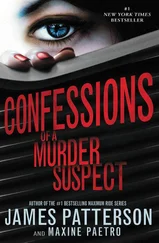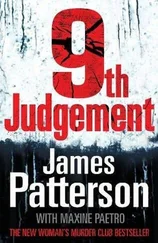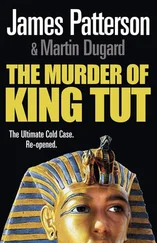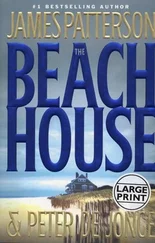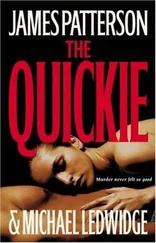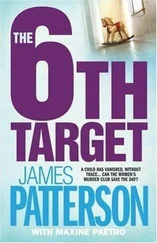A startled cry came from inside, and piles of rags rose up from the floor, ran toward the back of the house. A door slammed.
“This is a crash pad,” Conklin said. “Those were squatters, crackheads. It’s not safe, Cindy. We’re not going in.”
Cindy rushed past and headed for the staircase, ignoring Conklin, who was yelling her name.
She’d made a promise .
The air was damp and cold, smelling of mildew and smoke and rotting garbage. Cindy ran up the stairs, calling, “Rodney Booker? Are you here?”
No one stirred, not even a mouse.
The top floor was brighter and more open than the floors below. The windows were bare, and sunlight lit up the one large bedroom.
A brass bed was centered on one wall, the mattress covered with dark-blue sheets. Books were scattered everywhere. A crack pipe was on the top of a scarred dresser.
“Cindy, I don’t have a search warrant. Do you understand? ” Conklin said, coming up behind her. “Nothing we find here can be used as evidence.” He gripped her shoulders, gave her a little shake. “Hey, do you hear me?”
“I think Bagman Jesus lived here until he died.”
“Really. Based on what?”
Cindy pointed to the mural behind the bed. It was crudely drawn in black and white on plaster, images of writhing people, their hands reaching upward, fire and smoke swirling around them.
“Read that,” Cindy said.
Here was the proof Cindy had been looking for, that Rodney Booker and Bagman Jesus were one and the same.
Written within the hellish scene were two words in the same primitive lettering Cindy recognized from Flora Gold’s tattoo.
The letters spelled out JESUS SAVES.
CONKLIN AND I were working the phones at half past six p.m. when Jacobi stopped by our desks, took a twenty out of his wallet, put it on my desk with a stack of take-out menus, and said, “I’ll check in with you later.”
“Thanks, Boss.”
It was discouraging work.
We still didn’t know if the Baileys’ deaths were an accident, a homicide-suicide, or a double homicide – only that Claire’s consultants had come up with nothing and the public was having a collective heart attack.
So Conklin and I did all we could do. We worked our way down the Baileys’ endless list of friends and associates and asked the questions: When did you last see the Baileys? How were their moods? How did they get along? Do you know of anyone who would have wanted to harm Isa or Ethan Bailey?
Do you know of anyone who would have wanted them dead?
I was dialing a number when I heard my name, looked up to see Cindy breeze through the wooden gate in front of our assistant, Brenda Fregosi, Brenda calling out, “No,” stabbing the intercom button, her voice blatting over the speaker on my desk.
“ Cindy’s here.”
Waving a newspaper, Cindy floated around the day crew, who were putting on their coats as the night crew punched in. She plopped down in the side chair next to my desk, angling it so she could look at Conklin, too.
Hate to admit it, but she brought light into the gloom.
“Want to see what tomorrow’s paper will look like?” she asked me.
“No.”
“I’m a rock star, Richie. Look,” she said, slapping the paper down on my desk. Conklin tried to stifle a laugh and failed.
I said to Cindy, “You’ve heard the expression ‘misery loves company’?”
“You’re miserable and I’m company. What’s your point?”
“Misery loves miserable company.”
Conklin snorted and Cindy har-de-har-harred and I couldn’t keep stone-faced for another second.
Cindy gloated, “Don’t you just hate it when I’m right?”
She lovingly smoothed out the newspaper so I could see the picture on the front page of the Metro section, the photo of Rodney Booker, aka Bagman Jesus, under the headline $25,000 REWARD. DO YOU KNOW WHO KILLED THIS MAN?
So there it was: Rodney Booker was Bagman Jesus.
Rodney Booker had been identified by his father from the morgue photos, which showed three raised lines on Rodney’s shoulder, a crude slash-and-rub-with-ashes tattoo he’d gotten while in Africa.
Rodney Booker’s death was a homicide. And my name was associated with his case file. All I needed to do was find out who killed him, and while I didn’t have the time to do that, Cindy Thomas was both high on success and hot on the trail.
“I’ve been thinking,” Cindy said. “I can just keep working the case, turn over anything I find out to you. What, Lindsay?”
“Cindy, you can’t work a homicide, okay? Rich, tell her.”
“I don’t need your permission at all, ” Cindy said. Then, eyes brightening, “Here’s an idea. Let’s go to Susie’s and map out a plan we can all live with -”
I rolled my eyes, but Conklin was shaking his head and grinning at Cindy. He liked her!
I was ready to call Jacobi, let him straighten her out, when Claire blew through the gate, stomped toward us with a bad look in her eyes.
“ Dr. Washburn is on her way back,” Brenda’s electronic voice cawed from my intercom.
Claire was busy. She didn’t like to pay house calls to Homicide. Cindy, oblivious, called out, “Claire! We’re off to Susie’s. Come with us.”
Claire fixed her eyes on me.
“I can’t go to Susie’s,” she said, “and neither can you. Another one just came in. Killed just like the Baileys.”
THE DRAPED BODY on the autopsy table was female, thirty-three, her skin as white as my mom’s bone china. Her hair was a shimmering shoulder-length cut in four shades of blond. Her finger- and toenails had been lacquered recently, oxblood red, no chips.
She looked like the sleeping princess in the fairy tale waiting for the prince to chop through the briars and kiss her awake.
I read her toe tag. “Sara Needleman.”
“Positively ID’d by her personal assistant,” said Claire.
I knew Sara Needleman by her photographs in Vogue and W. She was a big-name clothing designer who made custom gowns for those who had thirty grand to throw down for a dress. I’d read in the Gazette that Needleman often did gangs of bridesmaids’ dresses, each gown related in color but distinctly different in style, and that during the debutante season, Needleman’s shop was in overdrive, designing for both the moms and the debs.
Surely Sara Needleman knew the Baileys.
Claire picked up her clipboard, said, “Here’s what I’ve got. Ms. Needleman called her personal assistant, Toni Reynolds, at eight this morning complaining of abdominal cramps. Ms. Reynolds says she told Sara to call her doctor and that she’d check in on her when she got to work.
“Sara did call her doctor, Robert Dweck, internist, and was told she could come in at noon.”
“She didn’t make the appointment,” Conklin said.
“No flies on you,” Claire said to Conklin. “Sara Needleman called nine one one at ten-oh-eight. EMS got there at ten fifteen, found Sara dead in her bedroom.”
“She died of stomach cramps? Something she ate?” I asked.
Claire continued, “To be determined, girlfriend. To be determined. Stomach contents and blood are at the lab.
“Meanwhile, I spoke with the medics who brought Sara in. There was no vomit or excrement in the house.”
“Why do you think her death is like the Baileys’?”
“At first I didn’t. There was a lull when she came in, so I got to her quick, thinking I knew what to look for.”
Three of Claire’s assistants tried to look busy, but they were hanging close enough to hear her report. I could already see the words “Breaking News” under a glamour shot of Sara Needleman interrupting our regularly scheduled programming. I could feel the public linking Needleman’s death to the Baileys’, the barometric pressure falling.
Читать дальше
